Throughout the West, in hidden streams and backcountry rivers, one of the continent’s signature trout is busy looking up.
With July comes cutthroat trout season.
Certainly, some of us have been catching cutties for weeks—even months if we braved the snow and the cold on rivers that remain open all year. But between now and the middle of September here in the Rockies, cutthroats on big, gaudy dry flies don’t get much easier to catch.
As beautiful and resilient as they are, they are the forest grouse of the trout family. Naive. Easy to fool. A little daffy. Borderline doltish.
And I love them. In fact, if you love catching trout on dry flies you can see floating high and happy from the opposite bank, you should love native cutthroats, too. From northern New Mexico’s Rio Grande cutthroats and up through Colorado River cutthroat trout country in Colorado, Utah and Wyoming, and then farther north, through the Yellowstone country and on into the southern Canadian Rockies, native cutts are summertime fly rod feasts.
And if you’re catching them, chances are you’re surrounded by some of the best scenery North America has to offer.
While these fish remain plentiful in certain watersheds, they’ve lost the vast majority of their native habitat to encroaching non-native trout, development, pollution and warming waters. I can’t count the times I’ve been excited at the prospect of catching native cutthroats on backcountry waters in the West only to be disappointed when nothing comes to hand, save for 6-inch brook trout, introduced a century earlier and now the master of the creek. Where brookies thrive in the West, cutthroats are likely long gone.
In most watersheds where native cutthroat trout do persist, state fish and game departments require catch-and-release. Even where a modest harvest is allowed, anglers should simply let cutthroats go.
Flies
Don’t be anal here. When runoff starts to clear on known cutthroat streams, go with the first big bug of the year in the backcountry. Golden stonefly and even salmonfly imitations will bring curious trout to the top. If you want to be especially productive, add a dropper—a size 12 Bead-head Prince will get hit just as often as the elk-hair concoction you’re floating it under. Just as successful is floating two dry flies over likely runs—a big salmonfly pattern followed by a smaller caddis or an attractor mayfly (think Adams—this fly rarely disappoints) about 18 inches behind.
Later, as the weather warms and terrestrials start to become more prominent, a fat ‘hopper pattern, or even a Chernobyl, will draw strikes. At dusk, in deeper pools, I like to throw streamers. Last summer, while walking a trail here in eastern Idaho, I noticed a lot of the coyote scat I came across had mouse parts in it. That evening, I dug out the only mouse pattern I could find and spent two hours horsing in 20-inch cutthroats on a stream no wider than my suburban lane. Cutthroats have a reputation for being a bit timid, but certain subspecies are downright predatory.
Farther north, in the Salmon River country of Idaho, northern Montana and into British Columbia, this also brings the possibility of a big bull trout into the equation.
This simple rule of thumb applies: if you can see your fly, chances are it’s big enough to attract some attention on top. Don’t be shy. And if you’re not having immediate success, change your fly to something else. It’s likely just a matter of time. Do yourself and the fish a favor—pinch your barbs.
Rods and lines
I love to chase backcountry cutties with light fly tackle—I generally use a 3-weight rod with corresponding floating line, with my leader cut down to 3x tippet. Cutthroats are rarely leader shy, save where they see a lot of pressure, so bigger tippet is just fine. It also reduces the likelihood of breaking off a bigger fish and shortens the fight for smaller ones, making for quick releases.
Farther north, where bull trout live, or if you’re planning to throw bigger streamers, consider a 5-weight set-up.
Reels
Fly reels for cutthroats are simply line-holders. I’ve never had a reel problem while chasing cutthroats. If you’re going big, though, use something with a serviceable drag that shorten the fight when necessary, simply to protect the trout.
Where to go
Cutthroat trout in various subspecies are native to New Mexico, Colorado, Utah, Wyoming, Nevada, California, Oregon, Washington, Idaho, Montana and the Canadian provinces of Alberta and British Columbia. Sea-run cutthroats are native from northern California north to Alaska, and can be a blas to pursue.
But, for the most part, backcountry cutthroats are going to be found in the coldest and cleanest waters where 19th and 20th century fisheries managers never thought to introduce non-native trout. If you’re not sure where they can be found, check with state fish and game agencies—often, wherever they list cutthroat trout in the harvest limits (hopefully under “catch and release only”), you’ll find wild and native cutthroats right where they should be.
If you do stumble upon a backcountry stream in the Rockies full of brook trout, brown trout or rainbows, chances are, you won’t find many, if any at all, cutthroat trout.
Also, throughout the West, there are determined efforts to reintroduce native cutthroat trout to their natal watersheds. In some states, these reintroductions have been incredibly successful, so much so that fishing for these native trout is now allowed again.
Final word
Remember, these are our native fish here in the Rockies. Like some of us Western anglers, they can be a little dippy. Where harvest is allowed, consider letting all the fish you catch go free. Use care with these trout—keep them wet when you’re handling them, use barbless flies to allow the hook to come out easier and make sure they swim away when you release them.
Consider, too, that in many watersheds, native cutthroats have lost 90 percent of their historical habitat. Take care, not only of the fish, but of the waters you’re fishing.
The rest of us who live here will thank you for it.




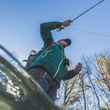
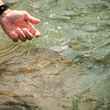

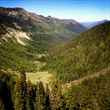



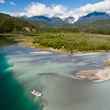





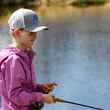



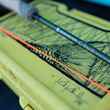
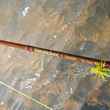




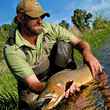

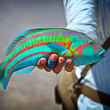
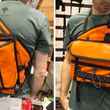
Comments